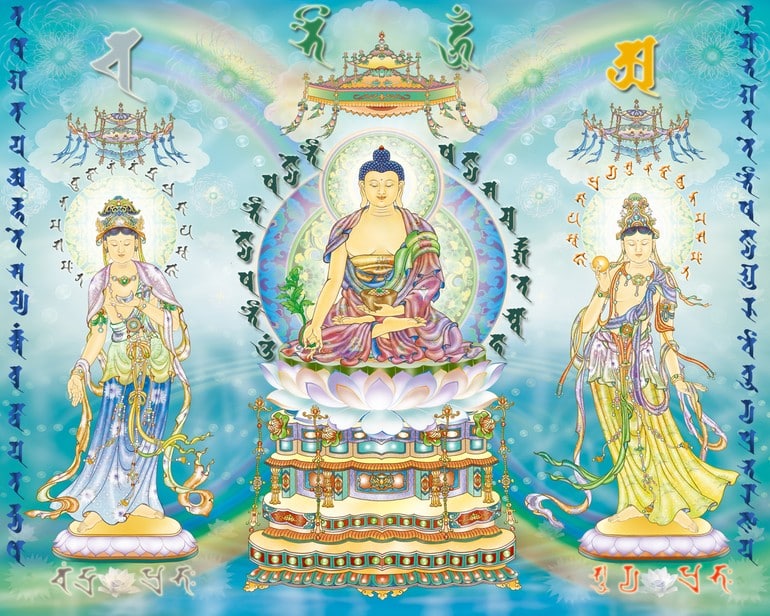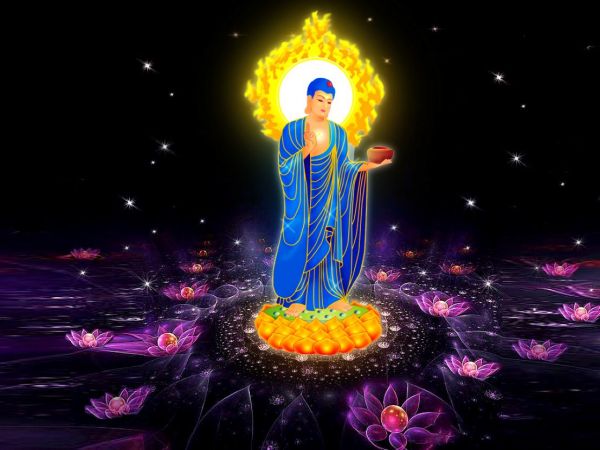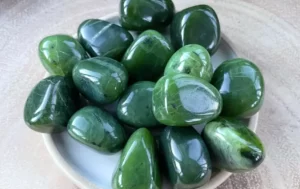Are you seeking a powerful tool for healing and spiritual growth? Look no further than the Medicine Buddha mantra. By chanting this mantra, you can tap into the divine healing energy of the Medicine Buddha and transform your body, speech, and mind into that of a pure and enlightened being. But the benefits don’t stop there.
The Medicine Buddha mantra can also help you cultivate compassion, wisdom, and spiritual insight, leading you on a path towards greater peace, happiness, and fulfillment. So why not explore the transformative power of the Medicine Buddha mantra and experience its profound effects for yourself?
Who is Medicine Buddha?

In Buddhism, Medicine Buddha is a deity who is revered as a symbol of healing and as the embodiment of the healing power of the Buddha’s teachings. The Medicine Buddha is considered to be a manifestation of the Buddha of infinite light and compassion, and is believed to have the power to heal both physical and mental ailments.
According to Buddhist tradition, the Medicine Buddha is said to have made twelve vows, which include the commitment to help those who are sick and suffering, to relieve them from their pain and afflictions, and to bring them to perfect health and well-being. The Medicine Buddha is also believed to be able to purify negative karma and to help practitioners on the path to enlightenment.
The Medicine Buddha is often depicted as a seated figure, with a blue-colored body and a serene expression. In his right hand, he holds a branch of the myrobalan plant, which is a symbol of healing, and in his left hand, he holds a begging bowl, which represents his selfless compassion and his commitment to helping others.
The practice of Medicine Buddha meditation and recitation is popular in many Buddhist traditions, and is believed to have the power to bring healing and spiritual benefits to those who engage in it.
Seven Medicine Buddhas:
Endowed with infinite compassion and the ability to guide all sentient beings to the shore of enlightenment, the Medicine Buddha has manifested in numerous forms, including those of seven Medicine Buddhas, to alleviate suffering and bestow happiness upon all sentient beings.
- Bhaisajyaguru
- Abhiyaraja
- Dharmakirtisagara
- Asokottamasriraja
- Suvarnabhadradravimala
- Svaragosaraja
- Suparikirti-tanamasriraja
The Seven Medicine Buddhas have the potential to alleviate the hindrances to attain temporary happiness as well as the ultimate happiness of complete enlightenment. Within the Buddhist cosmos, the Pure Land of Medicine Buddha is known as the Pure Lapis Lazuli Land, located in the East.
Symbolic meaning

The Medicine Buddha is commonly portrayed with the deep blue color of Lapis, a dark blue stone with gold pyrite specks that resemble a starry sky in the dark. Lapis is mainly quarried in Afghanistan and has been a rare and highly prized gemstone in ancient East Asia.
During ancient times, Lapis was believed to possess mystical powers, while in East Asia, it was believed to have healing properties, particularly in reducing inflammation or organ damage. In Tantric Buddhism, the deep blue color of Lapis is thought to have a purifying effect on the mind of the bearer.
The blue color of Lapis is always associated with the Medicine Buddha in Buddhist iconography. In some depictions, his entire body is Lapis, while in others, he is yellow but surrounded by the blue hue of Lapis. Therefore, he is also known as bhaiṣajyaguruvaidūrya-prabha-buddha in Sanskrit, with “prabha” referring to the pure light of Lapis lazuli.
Buddhist art frequently portrays the Medicine Buddha holding a bowl in his left hand, resting it on his lap. His body is adorned with various ornaments and symbols, such as a crown, a necklace, and a robe, which signify his enlightened status.
In addition to traditional paintings and sculptures, the Medicine Buddha is also represented in other forms of Buddhist art, such as thangkas (scroll paintings), mandalas (geometric diagrams), and statues. These artworks often feature intricate details and vibrant colors, which symbolize the various aspects of the Medicine Buddha’s teachings and qualities.
In Tibet, the Medicine Buddha is often seen holding Myrobalan, a plant that represents all the best medicinal herbs and is unique to Tibetan medicine. Myrobalan is said to aid in curing the three poisons: attachment, hatred, and ignorance, much like the healing Buddha, who can see the real cause of any affliction, whether physical or mental.
By understanding and correcting the interdependent conditions that cause disease and suffering, we can alleviate illness. This approach is commonly used in modern medicine. Like other Bodhisattvas and Buddhas, the Medicine Buddha is seated on a lotus pedestal, with his right hand open and relaxed, indicating his readiness to receive prayers and bless sentient beings.
12 Great vows of Medicine Buddha

The 12 vows of Medicine Buddha, also known as the 12 great aspirations, are the pledges made by the Medicine Buddha to aid sentient beings in their journey to liberation from suffering. These vows are as follows:
- To illuminate the entire world with bright and perfect light until the end of time.
- To heal all those who are sick and suffering.
- To lead those who have lost their way onto the path towards enlightenment.
- To relieve the poor and the destitute from their suffering.
- To alleviate the suffering of those in the lower realms.
- To help women who wish to be reborn as men to achieve their goal.
- To help dispel the fear and sufferings of all sentient beings.
- To help those who are bound by negative karma to achieve liberation.
- To assist those who wish to be reborn in a pure land to achieve their goal.
- To give whatever is requested of him by sentient beings.
- To help those who are afflicted by negative emotions to attain peace and tranquility.
- To help those who are striving to achieve Buddhahood to attain their goal.
The 12 vows of Medicine Buddha serve as a reminder of his compassionate nature and his desire to help all sentient beings in their quest for liberation from suffering. Through these vows, he pledges to guide all beings towards enlightenment and to alleviate their pain and suffering along the way.
Versions of the Medicine Buddha mantra
Millions of people around the world call out the name or chant the Medicine Buddha mantra. It is even written in the scriptures that if you say the name of the Medicine Buddha in the ear of a dying animal or human, they will be guaranteed rebirth in the good realm, regardless of their past karma. It is no wonder that the Medicine Buddha is well-known in Buddhism.
As his name suggests, the Medicine Buddha is associated with the healing of physical and mental illnesses, as well as the purification of negative karma. His mantra exists in both long and short forms, with the longer version being:
OM Namo bhagawate Bhaishjaya guru
vaidurya Prabha rajaya tathagataya
arhate samyaksam buddhaya teyatha
om bekhajye bekhajye maha bekhajye
bekhajye rajaya samudgate
svaha
Short Tibetan version:
Tayata
Om Bekandze Bekandze
Maha Bekandze
Radza Samudgate Soha
The Meaning of Medicine Buddha mantra
The Medicine Buddha mantra is a sacred sound formula that is recited or chanted in Buddhist practice. It is believed to invoke the healing power and blessings of the Medicine Buddha, and to help purify negative karma and relieve suffering.
The mantra, “Tayatha Om Bekanze Bekanze Maha Bekanze Radza Samudgate Soha,” is in Sanskrit and is often translated as follows:
- Tayata: Going beyond the limit (beyond Samsara)
- Om: A very popular word that evokes spiritual strength and absolute presence.
- Bekandze Bekandze: Call name of Medicine Buddha twice
- Maha Bekandze: Great Medicine Buddha
- Randza Samungate: Completely liberated or awakened
- Soha: Dissolve in me
May many sentient beings quickly be liberated from sickness and may their diseases never arise again.
The Medicine Buddha is famous not only for his ability to cure many diseases, including cancer, but also for his ability to purify past negative karma and to help us on the path to enlightenment. His words of wisdom also include a prayer to free repentant prisoners.
The word “Bekandze” means “remove pain,” while “Maha Bekandze” means “remove all pain.” One interpretation of the meaning of the first “Bekandze” is that it refers to the removal of real suffering, not only from illness but from all problems that cause suffering.
The first mantra is believed to remove all physical and mental problems, including those related to old age and disease. It also removes the pain of death and rebirth due to karma and disturbing thoughts.
The second line of the mantra removes all real causes of suffering, which are not only external but also internal, such as karma and disturbing thoughts. These internal causes allow external factors such as food, sunlight, and work pressure to become conditions for disease.
While scientists believe that regular exposure to the sun can cause skin cancer, without the cause in the mind, there is nothing to make the external factor a condition for illness. Sunlight is a condition for skin cancer, but it is not the main cause. For those who have created the cause of skin cancer, the external phenomenon of sunlight can become a condition for the disease.
For example, not everyone who sunbathes on the beach gets skin cancer. Humans have also been exposed to the sun for thousands of years, but skin cancer is a relatively recent disease.
The important question is: Why doesn’t everyone exposed to the sun get skin cancer? It’s proof that sunlight isn’t the main cause of skin cancer, as not everyone exposed to the sun gets skin cancer.
If someone has created causes, as long as they don’t do anything to undo them, the cause will certainly bring results of their own. Like a planted seed, it will inevitably lead to germination as long as it is not eaten by birds or other factors. Once there is a cause, as long as there is no obstacle to the cause, we will naturally experience its effect.
So the second “Bekandze” refers to removing the cause of problems, the karmic force fueled by disturbing thoughts. The third phrase, “Maha bekandze”, or “great exclusion,” refers to the removal of even the subtlest traces left on consciousness by disturbing thoughts.
The Benefits of chanting Medicine Buddha mantra
Chanting the Medicine Buddha mantra is believed to have several benefits in Buddhist practice, including:
- Healing: The mantra is believed to invoke the healing power and blessings of the Medicine Buddha, which can help to alleviate physical and mental illnesses.
- Purification: The mantra is also believed to help purify negative karma and reduce the causes of suffering.
- Inner peace: The repetitive chanting of the mantra can help to calm the mind and promote inner peace.
- Compassion: Chanting the mantra can also help to develop a sense of compassion and empathy for others, as the intention of the mantra is to alleviate the suffering of all sentient beings.
- Protection: The mantra is believed to offer protection from negative energies and obstacles on the spiritual path.
- Connection: Chanting the mantra can help to establish a connection with the Medicine Buddha and with the wider Buddhist tradition.
The Medicine Buddha mantra contains the entire path to enlightenment. By chanting the mantra, we can imprint the path into our minds, establishing the blessings of the entire path in our hearts. Performing the path to enlightenment through the mantra purifies our body, speech, and mind, transforming them into the pure body of the Medicine Buddha. This allows us to become perfect guides for sentient beings.
With perfect wisdom, we can see the level of mind of all living beings and the methods suitable for them, bringing them from suffering to the incomparable happiness of complete enlightenment. As we chant mantras sincerely, we also gain the power to manifest in various forms suitable for all living beings and reveal the necessary methods to guide them, providing material, educational, or Buddhist teachings.
Whenever the positive imprints from their past actions ripen, we can reveal means to guide sentient beings to complete enlightenment without delay. Chanting the Medicine Buddha mantra illuminates us with his clear lapis lazuli wisdom light, opening our hearts to compassion and freeing us from greed, anger, and delusion.
For those who have committed many sins, chanting the mantra can transform them, inspiring them to live ethically, practice strictly, achieve liberation, and neutralize bad karma. For women, chanting the mantra can show them the way to practice, reduce inherent weaknesses in femininity, become stronger, more independent, transparent, and less susceptible to suffering.
Overall, chanting the Medicine Buddha mantra is seen as a powerful tool for promoting healing, purification, and spiritual growth, as well as for cultivating compassion and inner peace.
How to Chant Medicine Buddha mantra

Before beginning to chant the Medicine Buddha mantra, it is recommended that you wash your hands and rinse your mouth clean. Your clothing should be dignified, preferably Buddhist attire. Your posture, whether sitting or standing, must be upright, and when kneeling, it must be done with sincerity.
The sound of your chanting should be audible, and the key is to use your mind to feel the vibrations of the mantra. When your chanting and your mind are united, the mantra will work effectively.
To begin, chant the mantra as follows:
Tayata
Om Bekandze Bekandze
Maha Bekandze
Radza Samudgate Soha
Anyone can chant the Medicine Buddha mantra regardless of age or gender. However, it’s important to remember that just reciting the mantra is not enough, and it must be practiced with sincerity. Chanting for the sake of gain is like riding a horse to see flowers, and any effort that doesn’t come from the heart won’t bear sweet fruit.
It’s essential to remember to pay respects to the Medicine Buddha image, and to prepare the altar with care every day, keeping the flowers and fruits fresh. When chanting the mantra, it’s important to keep the body and mind pure. By chanting the Medicine Buddha mantra continuously for at least seven days to seven weeks with the deepest respect, your wishes are more likely to come true.
How to Recite the Medicine Buddha mantra into a glass of water

If there is a sick person in your family who is unable to stand up, in a comatose or unconscious state, or elderly and suffering from serious illnesses that make it inconvenient to sit up and chant mantras, their children and grandchildren can meditate on their behalf in front of the ancestral altar.
They should offer lamps and fruits with dignity and reverence, and recite the Medicine Buddha mantra 108 times continuously for a week. They can then meditate on the mantra into a glass of water or bottle of mineral water on the altar, and give it to the sick person to drink, in order to promote healing and relieve suffering and pain.
It is important to note that the person reciting the mantra into the glass of water must maintain a pure state of mind, and can call on all family members and close friends to recite together in order to strengthen their collective efforts to help the patient recover quickly.
The light of the Medicine Buddha is described as being clear and completely pure, without any impurities, shining everywhere both inside and outside. Therefore, reciting the Medicine Buddha mantra can dispel the darkness of life, leading us away from delusions and towards the path of liberation and enlightenment. We hope that this article has provided useful information for you about the benefits of reciting the Medicine Buddha mantra.







